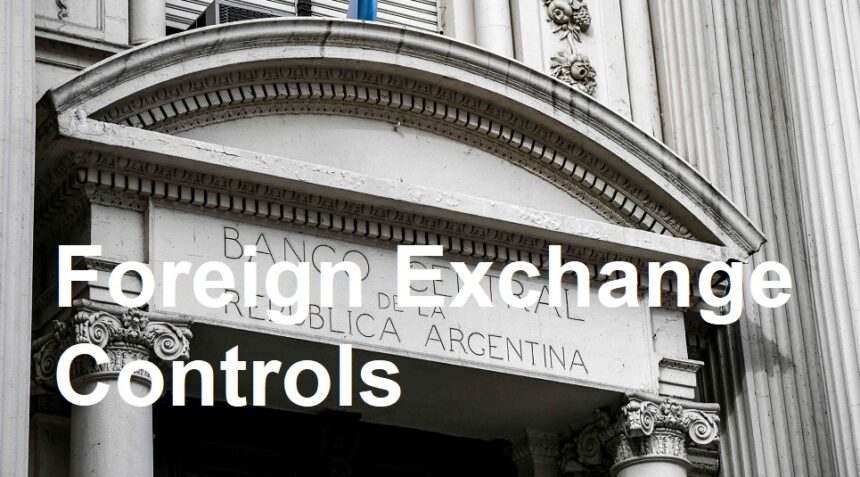Foreign exchange controls are restrictions imposed by the government of a country in foreign currency exchange transactions. In modern times, the control of foreign exchange transactions is an uncommon practice, in fact this action can cause a response by other parties, because foreign exchange control can affect the value of that country’s currency against the value of other countries’ currencies. This can be detrimental to the country’s trading partners because the products of that country are cheaper when sold on the international market, which can cause the partner country to experience a trade deficit with that country. However, in certain situations, this act of controlling foreign exchange transactions is understandable, namely when a country is experiencing economic turmoil or in weak economic countries.
This control of foreign exchange transactions was widely applied by countries in the world before 1980. After that, slowly this control of foreign exchange transactions was not implemented, now only countries with weak economies or whose economies are in transition are allowed to exercise control over these foreign exchange transactions, and this allowed by the IMF in article 14.
Types of Foreign Exchange Controls
There are five types of Foreign Exchange Controls :
1. Lightweight Exchange Control System. This control is carried out by trying to maintain the currency exchange rate within a certain level.
2. Full Exchange Control System. This type of control not only fixes the exchange rate at a certain level, but the government directly controls foreign exchange transactions. Foreign exchange receipts from export activities are submitted to the government (usually the central bank), then the central bank allocates foreign currency to parties in need, the request for foreign currency must meet certain criteria.
3. Compensation Settings. It is a control mechanism by assigning certain values to trading partners. So that the value of the domestic currency can be maintained due to controlled foreign exchange demand. For example, Indonesia and Malaysia agree on a trade transaction, where Indonesia sells coal worth 100 million dollars, Malaysia sells CPO with a value of 100 million dollars, so that there is a balance in the entry and exit of foreign exchange.
4. Clearing Agreement. It is an agreement in a trade transaction between two countries in which each country uses their domestic currency. So this transaction does not involve currencies other than the currencies of the two countries.
5. Payment Settings. In this control, international transactions use ordinary payment procedures, but citizens of the countries involved are forced to buy goods or services from other countries with the same value as purchases made by partner countries.
Conditions Requiring Foreign Exchange Controls
Controlling foreign exchange rates is not a common thing, but in certain situations it must be done. These conditions include:
Stop the flight of capital abroad. The flight of capital abroad can destabilize the domestic economy. If this condition is not controlled, it can result in the country being dragged into an economic crisis. For example, in 1998, domestic capital or funds fled or went out to other countries, causing our country to lack foreign exchange.
Disruption of the balance of payments. When the inflows and outflows of foreign exchange are not balanced, it can cause the economy to be disrupted, in such conditions the government must take steps to rebalance the trade balance, one of which is by means of foreign exchange control.
To distinguish various sources of foreign exchange income. Before the dollar dominated and became the currency of global trade, some countries implemented controls to obtain foreign exchange in the form of a certain currency.
Foreign Exchange Controls is an attempt to control the supply and demand of currency so that the exchange rate of a currency can be maintained at a certain level. Control of currency exchange rates is one of the tasks as well as the authority of a central bank, generally in all countries it is the central bank that plays a role in this problem. This role was increasingly felt after the implementation of a floating exchange rate (floating rate) following the cancellation of the Bretton Wood agreement in 1971 by President Nixon. So every country must be observant to determine the right exchange rate and in accordance with the conditions of the country.
So the idea is very easy to understand, the central bank must indeed control it in an effort to support the country’s monetary interests. Foreign Exchange Control is a work that is always carried out by the central bank, however the intensity and scale of course differ depending on the ongoing economic conditions and situation. So sometimes currency exchange rate controls are horrendous when they occur in large quantities and on a large scale, but there are also those that are not exposed or reported too big because they only occur in small amounts that are not too significant. There are many variations of foreign exchange control and the details will depend on the conditions prevailing at that time. Anyway, the goal is one, directing the exchange rate to a certain level.
Central Bank Intervention
As a forex trader, you must have often heard of central bank intervention, right? Intervention is usually done by the central bank when the currency exchange rate is deemed too low or too high to stabilize monetary conditions.
Peggings
Pegging or setting currency exchange rates is the most extreme form of currency exchange control. The problem is with pegging, meaning that the central bank of a country will continue to strive to maintain the value of the currency at a certain price level. For example, the SNB or the Swiss central bank set the CHF currency pegging against the Euro at the price level of 1.2000, where the SNB will seek various ways to maintain that price level. Or as the Chinese government did pegging the Yuan against the USD.
Pegging is generally done for trading purposes. With a fixed currency exchange rate, this will be beneficial for exporters and importers where fluctuations in the price of goods will not be too volatile and it will be easier to carry out financial calculations. But the pegging policy will make the central bank have to work hard and sometimes even have to use the existing foreign exchange reserves to maintain the exchange rate. Therefore, only countries that are sure and strong in monetary terms dare to carry out this policy.
Capital Flow
Capital flow is one of the factors that can make the central bank control currency exchange rates. For example, when there is a capital flow out of a country and it can endanger the monetary condition of that country, for example, the central bank may issue a policy to limit the number of foreign currency exchange transactions.






















